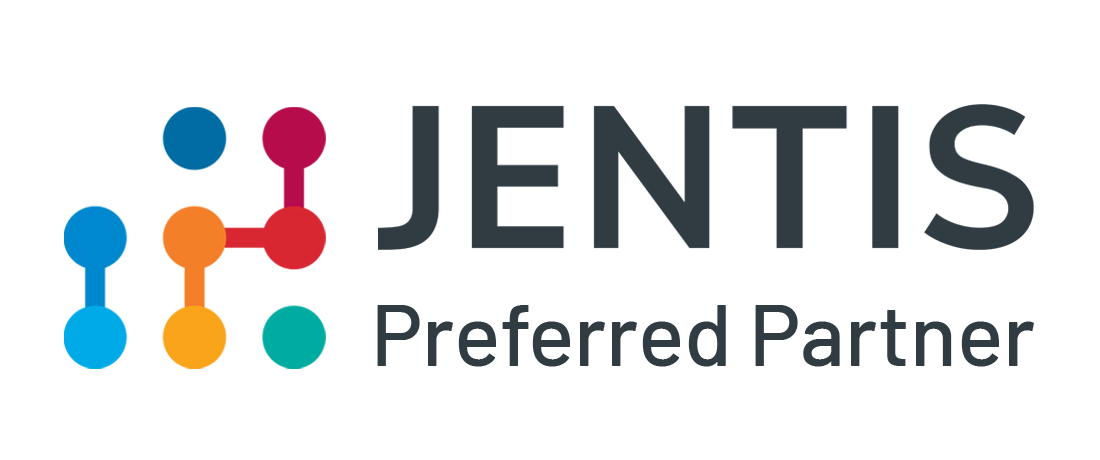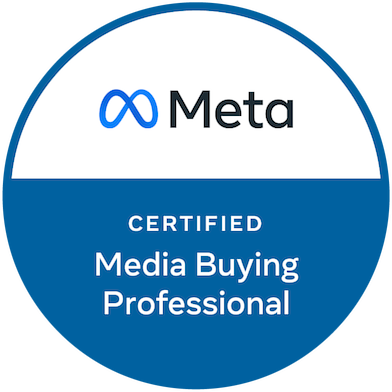Third-party cookies have been a cornerstone of many digital marketing strategies, providing valuable insights into web browsing habits and behavior. However, this landscape is rapidly changing, particularly following Google’s retracted announcement to phase out third-party cookies in Chrome by the end of 2024.
Google’s original decision came amidst several significant factors:
- Privacy Concerns: There’s a growing demand for transparency in data collection and usage from consumers and privacy advocates. Research from the Pew Institute reveals that 81% of consumers believe the potential risks of personal data collection now outweigh the benefits.
- Security Risks: Third-party cookies pose potential security risks, including the possibility of data breaches and the hijacking of login credentials.
- Legal Changes: Legislation such as GDPR, the ePrivacy Directive, and CCPA have imposed restrictions on how brands and advertisers can obtain consent via cookies and process data for marketing purposes.
- High-Profile Investigations: Regulatory bodies, like the Irish Data Protection Commission (IDPC), have launched investigations into online advertising practices, adding pressure on companies like Google to address privacy concerns.
It’s worth noting that Google’s decision followed similar actions by other browser providers such as Apple (Safari) and Mozilla (Firefox), which have already implemented measures to block third-party cookies.
Despite Google’s decision to temporarily retain third-party cookies, advertisers should not remain passive. It is only a matter of time before this technology disappears for good—and even today, it mostly works only in the Google Chrome browser. Therefore, an early transition to alternatives is essential to ensure the effectiveness and precision of advertising efforts in the long run.
What Challenges are marketers facing:
Consumers are increasingly taking steps to protect their privacy online, despite a strong preference for personalized, relevant advertising, which relies heavily on 3rd party cookies to function. The extent to which users are taking steps to limit cookies is very high, as there are several ways to do so including clearing caches, browsing incognito, using VPNs, and rejecting opt-in prompts. According to a study conduced by marketing behavior research agency, Nano, seven out of ten users have actively taken steps to limit cookies, including measures like using Safari and other privacy-focused browsers. Additionally, 18% opt-out of cookies daily, while 40% utilize VPNs to enhance privacy, despite associated costs and efforts. This increasing prudence for their personal data, has significantly impacted marketers’ ability to collect meaningful data effectively.
So what can we do? In this article, we explain the solutions proposed by the biggest digital advertising players that might mitigate the impact of this changing environment.
Google’s alternatives to third-party cookies
Privacy Sandbox:
Privacy Sandbox is not a standalone tool but an open-source initiative developed by Google to create privacy-friendly alternatives to third-party cookies. Despite Google’s decision on July 22, 2024, to retain third-party cookies, this project will continue to be pushed forward. Google emphasizes that these tools remain crucial for businesses, as they expect a significant increase in cookie-less traffic in Chrome. The Privacy Sandbox encompasses a suite of technologies designed to minimize the collection of identifiable user data while still enabling effective ad targeting based on web and app user interests. The aim is to eliminate most cross-site tracking, user fingerprinting, and other covert tracking methods, thereby giving users more control over the data they share with advertisers. Privacy Sandbox APIs provide advertisers and publishers with the means to target more relevant audiences while maintaining user privacy. Updates on the release timeline for these APIs can be tracked through Google’s official channels.
Topics API:
Topics API is one of the solutions within Google’s Privacy Sandbox initiative. It functions as a replacement for third-party cookies by categorizing the web pages visited by users into recognizable categories or “topics.” Unlike third-party cookies, Topics API does not share specific site visits across the web. Instead, each website is labeled with high-level topics, and the browser collects a few of the most frequent topics associated with visited sites. These aggregated topics are then shared with the sites users visit, allowing advertisers to show more relevant ads without needing to know the specific sites users have visited. This approach ensures user privacy while still enabling effective ad targeting based on user interests.
Protected Audience API (previously FLEDGE):
Protected Audience API, formerly known as FLEDGE, is another component of Google’s Privacy Sandbox initiative. It is designed to serve remarketing and custom audience targeting use cases without tracking user browsing behavior across sites. Through browser-level interactions, users can join ad interest groups, and advertisers can serve ads based on these interactions through on-device auctions conducted by the browser. However, for this solution to work, Chrome users need to opt-in, and being logged in to a Google account is necessary. This requirement is similar to Apple’s approach in its iOS 14.5 update, where users are given the choice to opt-in for personalized ads. The success of this solution may depend on user adoption rates and their willingness to opt-in to receive targeted ads.
Attribution Reporting API:
The Attribution Reporting API aims to provide advertisers with new measurement and reporting tools that are privacy-friendly and capable of replacing third-party cookies. It allows advertisers to place and analyze ads effectively while preventing cross-site user tracking. Currently, the API offers event-level and aggregate reporting, but cross-device reporting is not yet available for trial. Additionally, data processing occurs on individual browsers, limiting the attribution capabilities to single-browser conversion paths. This presents a challenge for advertisers who rely on cross-device tracking for comprehensive attribution analysis.
Facebook Ads: Will they still work without third-party cookies?
The Facebook Pixel, once a powerful asset for tracking user interactions and optimizing ad campaigns, now finds itself challenged by the implementation of stringent privacy measures. Amidst these changes, Facebook has introduced an alternative solution: the Conversions API (CAPI). This server-sided tool offers advertisers a new approach to tracking conversions and optimizing ad campaigns, independent of third-party cookies.
Independence from Third-Party Cookies:
While CAPI may initially appear similar to the Facebook Pixel, its key distinction lies in how data is transmitted. Unlike the Pixel, which tracks user activity and sends data through web browsers using JavaScript code and cookies, CAPI transfers data directly via the server, bypassing the need for third-party cookies.
When a user interacts with a Facebook ad, Meta sends a unique ID for that user to the server. The server then tracks the user’s actions based on this ID, recording events such as purchases or product additions to the shopping cart. This data is then sent back to Meta, associating the user’s actions with their Facebook profile.
Advantages of Facebook’s CAPI:
Besides offering solutions to the challenges posed by cookie restrictions, Facebook’s CAPI offers further advantages. CAPI works for websites without a log-in function or organizations lacking a CRM database, making it more accessable to alternatives that rely on people-based identifiers like email addresses. Facebook’s CAPI can utilize other data keys such as browser ID and IP address, which do not require sign-in or sign-up activity. This reduces dependence on specific information and enhances versatility.
Reliability and Performance:
Additionally, Facebook’s CAPI is considered more reliable than the Facebook Pixel. It avoids client-side issues such as tracking errors caused by users leaving pages before the pixel fires or interrupted connections. Connectivity issues and browser loading errors that diminish data quality can be avoided through CAPI deployment.
What does Microsoft propose as a solution to the decline of third-party cookies?
Microsoft’s approach to addressing the challenges posed by third-party cookie depreciation primarily revolves around its Edge browser and the features it offers users for controlling cookies. There is limited information available regarding specific solutions for advertisers on the Microsoft Ads platform, at the time this article was written
Microsoft Edge Browser’s Built-in Tracking Prevention:
Microsoft Edge offers users an all-or-nothing option for managing third-party cookies. By default, the browser allows cookies, but users have the flexibility to adjust settings to either permit or block cookies for all websites. This approach emphasizes giving users more control over their online privacy and data collection preferences.
Additionally, Microsoft highlights the built-in tracking prevention features within Edge, which are designed to enhance user privacy by blocking third-party tracking cookies and other tracking technologies. Users have the option to further customize their privacy settings to align with their preferences.
It’s important to note that Microsoft Edge is based on Chromium, the same open-source project that serves as the foundation for other popular browsers like Google Chrome and Brave. This shared foundation ensures compatibility with web standards and allows Microsoft to incorporate its own features and user interface elements into Edge.
Microsoft Consent Mode:
Due to the legally binding Digital Marketing Act, which came into effect at the beginning of the year, Microsoft must obtain consent for the processing of user data. Similar to Google’s Consent Mode, which was expanded this year, Microsoft Ads (UET) and Microsoft Clarity have also integrated a Consent Mode since July 2023, following Google’s example. For more information about the Microsoft Consent Mode, have a look into our blog post.
What about advertisers on Microsoft’s Ads Platform?
Despite Microsoft’s focus on user privacy and control within its Edge browser, there is a lack of official information regarding specific solutions for advertisers on the Microsoft Ads platform. While Microsoft pledges to support solutions that maintain consumer choice and control, there is no detailed insight into how advertisers can navigate the challenges posed by a limitation of third-party cookies within the Microsoft advertising ecosystem.
While Google has temporarily stepped back from phasing out third-party cookies, their number will significantly decrease as privacy regulations continue to evolve. Tech giants like Google, Meta, and Microsoft appear to be working on innovative solutions to successfully address future challenges.
Although the three companies have already outlined some initial ideas, the path forward remains uncertain.
Google’s Privacy Sandbox initiative is promising, particularly with the Topics API, which provides a glimmer of hope for more privacy-friendly ad targeting. However, beyond this, Google’s solutions are still in development and the timeline is suitably vague.
Similarly, while Facebook’s Conversions API presents an alternative to the fading efficacy of the Facebook Pixel, its adoption rates in advertiser accounts remain lacklustre. Moreover, Microsoft’s stance on addressing third-party cookie limitation within its Edge browser remains ambiguous, with no official communication regarding concrete solutions.
As advertisers grapple with these challenges, the future of online marketing hangs in the balance. In this climate, advertisers must proactively explore alternative avenues to maintain relevance and effectiveness. One such avenue lies in the activation of first-party data. By focusing on enhancing their first-party data maturity, implementing server-side tracking, or leveraging existing CRM data to model audiences, advertisers can fortify their strategies against the challenges posed by the limitation of third-party cookies. Subscribe to our newsletter to receive more information on how to build an effective first-party data strategy.









